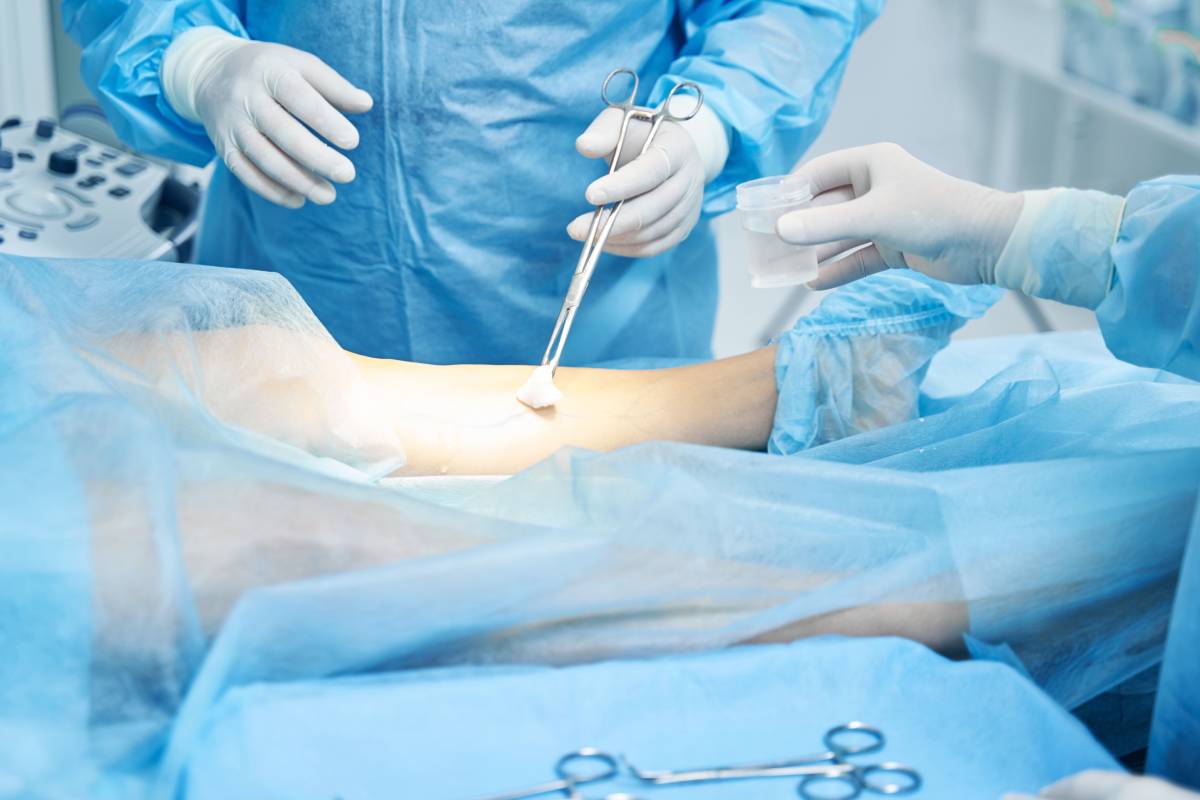Pre-Operative Skin Disinfection

Pre-operative skin disinfection is a critical step in the surgical process that reduces the risk of surgical site infections (SSIs), which are among the most common postoperative complications. Effective skin disinfection helps to eliminate or reduce the microbial load on the skin, thus preventing these microorganisms from entering the surgical wound. This process involves several steps and the use of various antiseptic agents, each with its own advantages and considerations.
The skin is a natural habitat for a multitude of bacteria that can cause SSIs—even with the body’s natural barriers and immune response, the introduction of these bacteria into a sterile surgical site can lead to infections, prolonged hospital stays, increased medical costs, and even death. Therefore, pre-operative skin disinfection is a standard practice to enhance patient safety and surgical outcomes 1.
Before the application of antiseptic agents, the patient’s skin should be cleaned with antimicrobial soap. This initial step helps to reduce the overall bacterial count on the skin. Hair removal may be performed if necessary, but it should be done with clippers rather than razors to avoid micro-abrasions that can serve as entry points for bacteria 2.
Next, the choice of antiseptic solution depends on various factors, including the type of surgery, the patient’s skin condition, and potential allergies. Povidone-iodine is a broad-spectrum antiseptic which is effective against a wide range of microorganisms, including bacteria, viruses, and fungi. It is often used in a 10% solution and has the advantage of being relatively inexpensive. However, it can cause skin irritation and staining 3,4. Meanwhile, chlorhexidine gluconate is an antiseptic which provides long-lasting antimicrobial activity and is less likely to cause skin irritation compared to iodine-based solutions. It is commonly used in a 2% or 4% solution, often combined with alcohol for enhanced efficacy 4–6. Finally, alcohol-based solutions are rapid-acting antiseptics that are highly effective against bacteria, viruses, and fungi. These are often used in combination with other agents like chlorhexidine to provide a synergistic effect. Alcohol-based solutions can be drying to the skin and should be used with caution in certain patient populations 7,8.
Proper application of the antiseptic solution is crucial for effective disinfection. The skin should be cleaned in a circular motion, starting from the incision site and moving outward—this helps to prevent the reintroduction of microorganisms from the periphery to the center. The antiseptic should be allowed to dry completely, as wet solutions can harbor bacteria and reduce the efficacy of the disinfection process. Furthermore, surgical teams must adhere to established protocols for skin disinfection. The use of sterile gloves and instruments during the application process and the avoidance of contact with non-sterile surfaces ensures consistency and reduces the risk of contamination. 1.
While pre-operative skin disinfection is highly effective, there are challenges and considerations to keep in mind. Patients with allergies to certain antiseptics may require alternative solutions 9. Additionally, in emergency situations, there may be limited time for thorough skin preparation. In such cases, rapid but effective disinfection techniques must be used 1.
Pre-operative skin disinfection is a fundamental component of surgical safety aimed at reducing the risk of SSIs. By following meticulous preparation steps, selecting appropriate antiseptic agents, and adhering to established protocols, healthcare providers can significantly enhance patient outcomes and minimize the incidence of infections.
References
1. Allegranzi, B. et al. New WHO recommendations on preoperative measures for surgical site infection prevention: an evidence-based global perspective. The Lancet Infectious Diseases (2016). doi:10.1016/S1473-3099(16)30398-X
2. Kamel, C., McGahan, L., Mierzwinski-Urban, M. & Embil, J. Preoperative Skin Antiseptic Preparations and Application Techniques for Preventing Surgical Site Infections: A Systematic Review of the Clinical Evidence and Guidelines. Preoperative Ski. Antiseptic Prep. Appl. Tech. Prev. Surg. Site Infect. A Syst. Rev. Clin. Evid. Guidel. (2011).
3. Durani, P. & Leaper, D. Povidone-iodine: Use in hand disinfection, skin preparation and antiseptic irrigation. International Wound Journal (2008). doi:10.1111/j.1742-481X.2007.00405.x
4. Mastrocola, M. et al. Meta-analysis of the efficacy of preoperative skin preparation with alcoholic chlorhexidine compared to povidone iodine in orthopedic surgery. Sci. Reports 2021 111 11, 1–7 (2021). doi: 10.1038/s41598-021-97838-8.
5. Chlorhexidine (Topical Application Route) Side Effects – Mayo Clinic. Available at: https://www.mayoclinic.org/drugs-supplements/chlorhexidine-topical-application-route/side-effects/drg-20070874?p=1. (Accessed: 26th June 2024)
6. Jalalzadeh, H. et al. Efficacy of different preoperative skin antiseptics on the incidence of surgical site infections: a systematic review, GRADE assessment, and network meta-analysis. The Lancet Microbe 3, e762–e771 (2022). doi: 10.1016/S2666-5247(22)00187-2.
7. Dumville, J. C. et al. Preoperative skin antiseptics for preventing surgical wound infections after clean surgery. Cochrane Database Syst. Rev. 2017, (2015). doi: 10.1002/14651858.CD003949.pub4
8. Hemani, M. L. & Lepor, H. Skin Preparation for the Prevention of Surgical Site Infection: Which Agent Is Best? Rev. Urol. 11, 190 (2009).
9. Hsieh, A., Sorg, O. & Piletta, P. A. Allergic contact dermatitis to benzoxonium chloride contained in an antiseptic solution. Contact Dermatitis (2022). doi:10.1111/cod.14160
